Tobacco-Related Disparities
Smoking
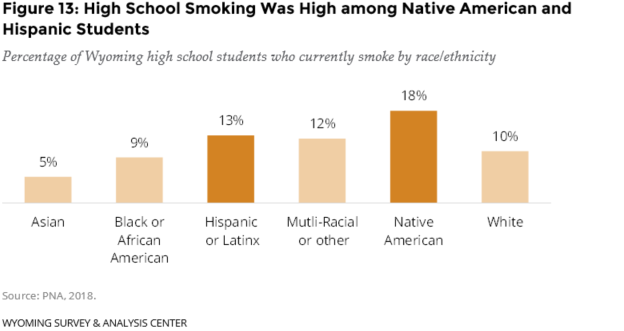
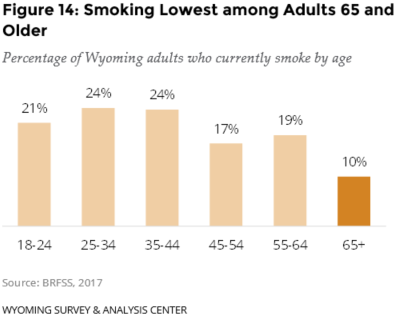
Young men (11%) and young women (11%) in high school smoke at about the same rate, but we do see a significant difference when it comes to race and ethnicity. Native American and Hispanic students smoke at higher rates than their counterparts do. Asian students stand out as having a low smoking rate (Figure 13, PNA, 2018).
Among adults, two broad demographic groups stand out as having low smoking rates: adults 65 years of age and older (to a lesser degree, adults between the ages of 45 and 64) and adults with more than a high school education (Figure 14 & Figure 15).
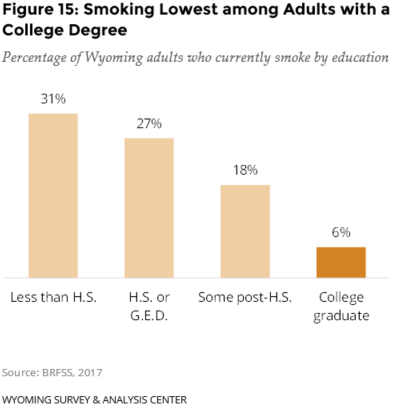
For Wyoming, the 2017 BRFSS only reported smoking rates for three racial and ethnic groups: (a) Hispanic (21%) adults, (b) Non-Hispanic White (18%) adults, and (c) Non-Hispanic American Indian or Alaskan Native (24%) adults. These smoking prevalence rates were not significantly different, mainly because the confidence intervals for the minority groups were very large, a result of the relatively low numbers of adults from these groups in Wyoming (BRFSS, 2017).
Vaping
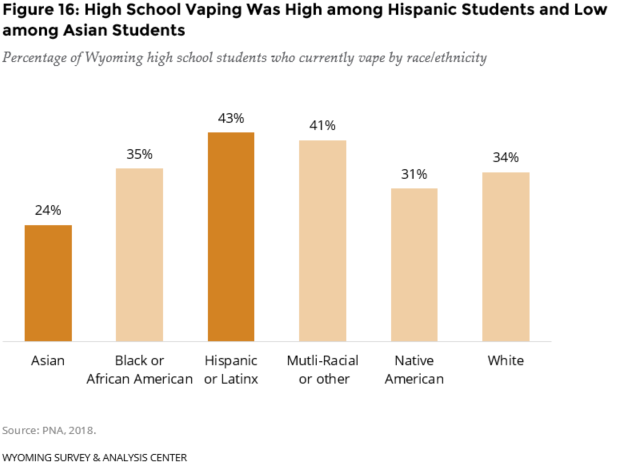
Young men (37%) and young women (35%) in high school vape at about the same rate, but there are disparities by race and ethnicity. Hispanic high school students stand out as having a high vaping rate and Asian students stand out as having a low vaping rate (Figure 16; PNA, 2018).
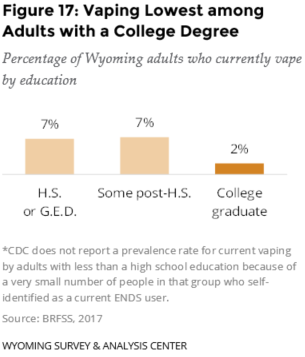

Because vaping is relatively rare among Wyoming adults (6% overall), 2017 BRFSS data do not allow for full exploration of demographic differences. Young adults (aged 18-24) stand out as having a high vaping prevalence, and college graduates stand out as having a low vaping prevalence (Figure 17 & Figure 18). CDC only reports the current vaping rate for White, Non-Hispanic adults and no other racial or ethnic group.

